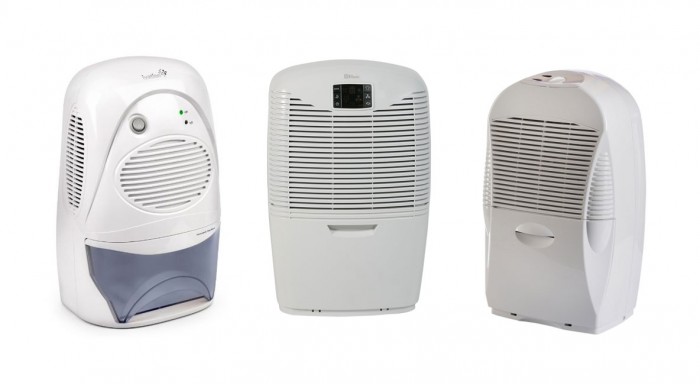Dehumidifiers are, as the name suggests, designed to control the humidity of your house by removing moisture from the air. This can be particularly helpful in controlling the sources of some of the commonest household allergy triggers which thrive in warm damp environments. Of course there are the additional benefits of reducing condensation and stopping your wallpaper falling off the walls.

How can a dehumidifier help my allergy?
Virtually all the allergies that affect us indoors have damp as a major contributing factor. The main culprits are dust mite allergy and mold spore allergy but other causes such as cockroaches also love damp corners. These allergies can all substantially affect your quality of life as well as being a potential asthma trigger.
Whilst everybody knows that mold and damp go hand in hand there is a less obvious, but equally important correlation between damp and dust allergy. Reducing and maintaining the humidity of a room at between 30% and 50% is one of the most effective methods of dealing with a dust mite infestation.
Of course all dehumidifiers were not made equal, so as well as choosing the most appropriate size and type there is also the matter of how effective at reducing damp the device is. Here at Allergies & Health we have selected only the best in class machines on the market that genuinely do remove moisture.
How does a dehumidifier work?
The basic premise is a fairly simple one – the dehumidifier extracts moisture from the air in the room until it reaches a set level. This level is the relative humidity of the air and is defined as a percentage of how much moisture the air can contain. A high percentage relative humidity would be over 80% which would cause condensation and provide ideal conditions for the host of biological pollutants mentioned.
There are two main types of dehumidifier; compressor (or refrigerant) dehumidifiers and desiccant dehumidifiers.
Refrigerant dehumidifiers work by taking advantage of condensation to remove excess moisture from the air. I’m sure you’ve all noticed that when you take a cold drinks can out of the fridge on a warm day it’s wet – well, that’s condensation. The moisture in the air is in vapour form but rapidly turns to liquid when it meets the cold surface of the drinks can. In a refrigerant dehumidifier moist air is sucked in to the machine where it meets a series of cooling coils. This captures the moisture as condensation which drips down into the collecting tray.
The dry air is now warmed up again before being returned into circulation.
Desiccant dehumidifiers use a moisture-absorbing material to extract the water from the air. This is often a silica gel, the same type you sometimes find in new clothes and shoe packaging. One of the drawbacks of this type of dehumidifier is the desiccant material or filter may need replacing from time to time.
Of course there are relative benefits and drawbacks to each type and these are discussed in more detail in out dehumidifier buying guide.
Tips on using a dehumidifier
The first thing to think about when buying a dehumidifier is what are you expecting it to fix? If you have a serious damp problem it may help a little but you really need to address the problem itself. There are also several precautions you can take to reduce your reliance on a dehumidifier around the house. These include making sure there is adequate ventilation, particularly in the kitchen and bathroom. Also, how you dry your clothes can create damp issues; make sure your tumble drier is adequately vented and if you really have to dry clothes on radiators try to put them next to an open window.
If you intend to run the dehumidifier whilst you are out of the house then this is generally fine. Virtually all modern dehumidifiers come with a automatic switch off when the water tank is full, so they won’t overflow.
To make sure that the tank doesn’t fill up to quickly and to save energy you should also choose a sensible humidity target. As mentioned between 30% and 50% humidity are ideal – we would recommend targeting the higher end to begin with.
As a rule dehumidifiers work more effectively when the room temperature is higher. This is not as much of an issue for desiccant dehumidifiers but for refrigerant types a minimum temperature of 15ºC (60ºF) is recommended.
One last piece of advice for allergy sufferers; vacuum the room before using the dehumidifier. This prevents any dust and allergens being circulated around the room once the machine is switched on.